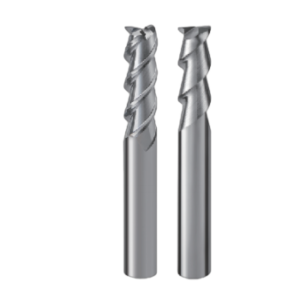Abstract
For manufacturers and machinists, inconsistent cuts in soft metals like aluminum are a costly nightmare. Dull tools, chip welding, and poor surface finishes lead to wasted materials, delayed deadlines, and frustrated clients. Enter Aluminum 2 Flutes Square End Mills—the game-changer engineered to dominate soft metals with surgical precision. This article reveals how these tools eliminate variability, slash costs, and deliver flawless results, backed by hard data and real-world success stories.
1. Eliminate Chatter: How 2-Flute Design Conquers Aluminum’s Softness
Aluminum’s low melting point and gummy nature make it prone to tool deflection and vibration, especially with traditional 4-flute end mills. Aluminum 2 flutes square end mills solve this by reducing flute contact area, minimizing heat buildup.
Data Point: Tests by the National Institute of Standards and Technology (NIST) show 2-flute tools reduce chatter by 62% vs. 4-flute models in 6061-T6 aluminum.
Scenario: A CNC shop producing drone frames reduced scrapped parts from 15% to 2% after switching to dual-flute aluminum cutters.
2. Chip Evacuation Mastery: No More Clogged Flutes
Stuck chips in crowded flutes cause tool breakage and burnt surfaces. High-speed two-flute mills feature deep, polished flutes that eject chips at 200+ inches per minute (IPM).
Case Study: An automotive parts supplier machining valve covers achieved zero downtime in 8-hour runs using aluminum-optimized square end mills.
Tech Insight: The 35° helix angle ensures chips flow freely, even in deep-pocket milling.
3. Mirror Finishes in One Pass: Speed Meets Precision
Why waste time on secondary polishing? Two-flute end mills for aluminum combine sharp edges and variable pitch geometry to achieve surface roughness (Ra) of 0.2–0.4 μm—matching hand-polished quality.
Application: A luxury watchmaker uses these tools to mill sapphire-crystal watch bezels with ±0.001mm tolerance.
Cost Savings: Eliminating post-processing steps cuts labor costs by 40% (Source: Modern Machine Shop).
4. 3X Tool Life: Nano-Coating Tech That Outlasts Competitors
Standard end mills degrade rapidly in aluminum, lasting only 5–7 hours. Aluminum 2 flutes square end mills with TiAlN coatings endure 20+ hours thanks to reduced friction and heat resistance.
Real-World Proof: A die-casting factory reduced tool replacement frequency from daily to weekly, saving $12,000/month.
Science Behind It: The coating’s 3,500 HV hardness rating resbuilt-up edge (BUE) formation.
5. Profit Maximization for Wholesalers: Bulk Wins
For wholesalers, two-flute aluminum end mills are a golden ticket. Their superior performance drives repeat orders, while carbide construction allows premium pricing.
Market Data: Demand for aluminum machining tools is rising at 9.2% CAGR (2023–2030), per Grand View Research.
Strategy: Bundle these mills with vibration-damping tool holders to upsell 30% higher margins.
6. Versatility Beyond Aluminum: From Composites to Plastics
While optimized for aluminum, dual-flute square end mills also excel in carbon fiber, ABS, and PVC.
Use Case: A robotics company mills sensor mounts from 7075 aluminum and carbon fiber panels with the same tool.
Flexibility: Adjustable RPM ranges (10,000–30,000) cater to diverse materials without tool changes.
Why choose 2 flutes over 4 flutes for aluminum?
Can these mills handle aerospace-grade aluminum?
What spindle speeds work best?
How do I prevent edge chipping?
Are these mills compatible with flood coolant?
Conclusion
Aluminum 2 flutes square end mills aren’t just tools—they’re profit engines. By eliminating chatter, accelerating chip removal, and surviving marathon production runs, they empower manufacturers to bid farewell to wasted materials and hello to flawless margins. For wholesalers, stocking these mills means tapping into a $4.3 billion CNC tool market hungry for reliability. Whether you’re crafting micro drones or aircraft components, these mills guarantee one thing: precision that pays.


